Home Lighting Devices
Home LightingDevices
In this chapter, you will learn about
- Lighting fixtures and devices
- Lighting controls
- Wire run and wireless lighting control
- Powerline controls
A lighting system in a home is created from the combination of lighting fixtures chosen to provide the desired amounts of light in each room or area of the home. The previous chapter provided an overview of the basics of lighting and lighting system elements. This chapter takes the next step and details the fixtures and luminaries that can be incorporated into a residential lighting system.
Lighting Fixtures
Lighting fixtures are known by a variety of names, including lamps, chandeliers, pendants, tracks, luminaires, and others. Each of these fixtures is designed to produce visible light, each with its own specific use and purpose. A light fixture, such as a lamp, is first and foremost an electrical device that produces visible light. Secondarily, a light fixture can also be considered as a piece of furniture or part of a room’s dcor that holds light bulbs or other light source devices.
You will often see some light fixtures referred to as a luminaire. The term luminaire refers to all of the components of a light fixture, including its light source, the features used to distribute or diffuse the light, to mount the light fixture to a surface, and the features used to protect the light source.
In Chapter 21, I listed the most common of the lighting fixture types, but we now need to discuss the components that make up each type of fixture and where and how each is best applied.
Architectural Luminaires
Built-in lighting systems are referred to as architectural luminaires. In most cases, a luminaire is a constructed feature that encloses a fluorescent fixture with one or more linear (meaning tube type) lamps. Architectural luminaires are most commonly attached to a wall or ceiling with a shielding board or structural feature used to hide the fixture.
Architecture Luminaire Types
Architectural luminaires are used to add ambient lighting accents to rooms with light-colored walls and ceilings and to provide task lighting in kitchens and baths. Here are some common examples of architectural luminaires:
- CovesThe light from a cove luminaire is directed up. Cove luminaires, as shown in Figure 22-1, are commonly used in rooms with high ceilings or above the cabinets in a kitchen.
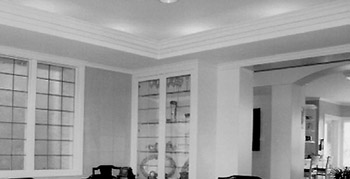
Figure 22-1: Cove lighting creates lighting effects and provides general lighting.
Photo courtesy of Connie J. Price.
- SoffitsA soffit luminaire directs its light down. Soffits are commonly used to provide ambient lighting in rooms with low ceilings or to provide task lighting for a counter or work area table.
- ValancesA valance luminaire directs its light both up and down. Valances are used to provide ambient lighting, but can also be used for washing a wall with light. Typically, valance lighting is used above windows and doors.
Luminaire Lighting
The lighting effect and the direction of the light produced by a luminaire can be controlled through the use of baffles, louvers, and diffusers. The purpose and use for each of these features is
- BafflesBaffles are either parallel slats or a crosshatched grid placed over the light source to block direct views of the lighting source. Figure 22-2 shows a fluorescent fixture with baffles installed. Baffles are available in a variety of sizes and spacing.
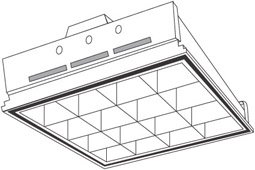
Figure 22-2: A fluorescent fixture with a grid of baffles installed - DiffusersA diffuser serves two purposes: to completely block views of the light source and to spread or scatter the light in an even pattern in all directions. Figure 22-3 shows a compact fluorescent light fixture covered with a plastic diffuser.
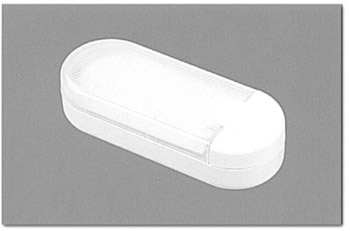
Figure 22-3: A compact fluorescent fixture with a diffuser
Photo courtesy of Ronfell Lighting.
- LouversLouvers, also called egg crates, are a cross-hatched grid work of cells (see Figure 22-4) that block direct views of the lighting source and concentrate the light into a narrower pattern in the direction the fixture is pointed.
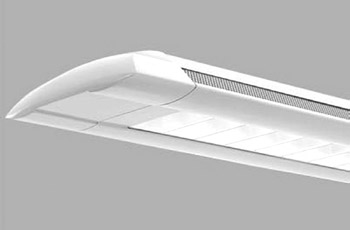
Figure 22-4: A louvered cover for a fluorescent light fixture
Recessed Downlight Fixtures
The recessed lighting fixtures that are the most commonly used in homes are primarily downlights installed in ceilings. Two types of recessed downlights are available: round recessed downlights (see Figure 22-5), also called cans and high-hats, and square or rectangle recessed downlights (see Figure 22-6), also known as troffers. However, there are troffer styles that can also be surface-mounted as well.
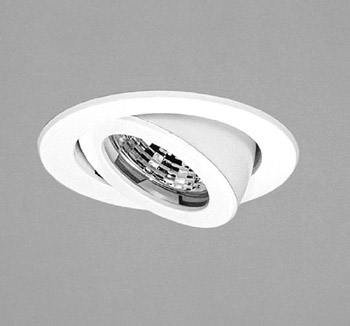
Figure 22-5: An adjustable round recessed downlight
Photo courtesy of Electric Lighting, Inc.
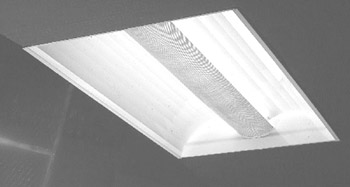
Figure 22-6: A recessed troffer-style downlight
Photo courtesy of Amerillum Corporation.
Round downlights can be incandescent, halogen, or compact fluorescent. Square downlights, typically larger than the round downlights, are usually linear (tube) fluorescent or halogen lamps.
Downlights are best used for all lighting types, but are most typically used for wall-wash and ambient lighting applications. If positioned properly, a downlight or group of downlights can also create task lighting.
| Note |
When installing a recessed downlight in an insulated ceiling, the lighting fixture has been approved for this type of installation. The IC (insulated ceiling) marking should be on the lighting fixture in plain sight. |
Ceiling and Wall Mounted Fixtures
Many of the same fixtures that can be used in architectural or recessed installations will also work for surface mounting on a ceiling or wall. Ceiling-mounted lighting fixtures, like the one shown in Figure 22-7, are available in a wide variety of shapes and sizes to fulfill not only the lighting requirements of a space, but to add to the room’s dcor as well.
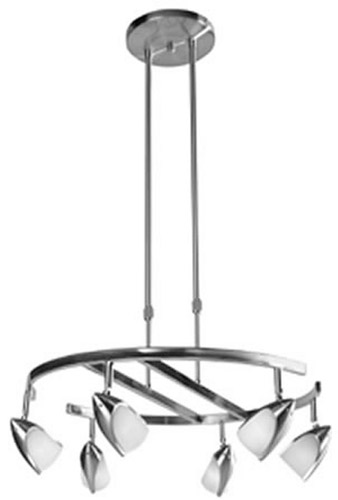
Figure 22-7: A spotlight ceiling-mounted light fixture provides task lighting.
Photo courtesy of Access Lighting, Inc.
Ceiling fixtures can be classified as chandelier, flush-mounted, close to ceiling, pendant, and spotlight, each with its own purpose and best use. Linear or circline fluorescent fixtures, incandescent fixtures (even with compact fluorescent lamps), pendant fixtures, and track lighting provide for ambient lighting, and in some instances, task lighting in a room. Linear fluorescent fixtures can provide good light levels for laundry rooms, bathrooms, garages, kitchens, and the like, which require ambient lighting that nears the level of task lighting. Incandescent fixtures are commonly used for general lighting in all areas of a home. Pendant and track lighting fixtures are more commonly used to provide task lighting to a specific area.
Wall-mounted Fixtures
The name of this type of lighting fixture basically explains the application and placement of these fixtures. Wall-mounted fixtures include wall sconces, vanity lighting, track lighting, and spotlights:
- Wall sconesThese fixtures are designed to use either incandescent or compact fluorescent lamps. Sconces are used in hallways, living rooms, bedrooms, and rooms with low ceilings to provide accent and ambient lighting.
- Vanity lightingVanity lighting is applied in bathrooms and occasionally bedrooms to provide task lighting. Typically, vanity lighting is placed either on the sides or above a bathroom mirror. Figure 22-8 depicts a bathroom that uses both overhead and side-mounted vanity lighting.
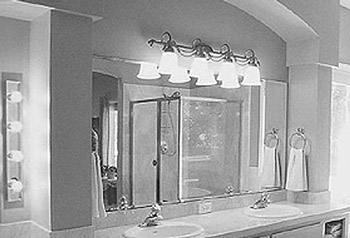
Figure 22-8: A bathroom with vanity lighting both above and to the side of the vanity mirrors
Photo courtesy of Connie J. Price.
- Track lightingIn wall-mounted placements, track lighting can use either incandescent or halogen lamps to provide flexible accent and task lighting. Figure 22-9 shows track lighting installed in a hallway.
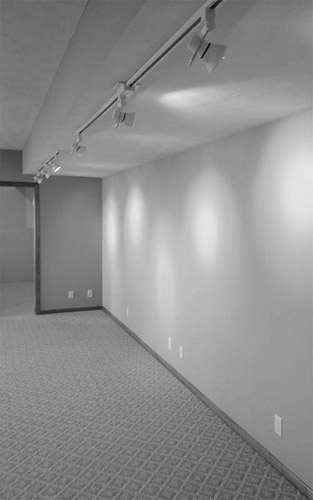
Figure 22-9: Tracking lighting placed to spotlight wall locations for future art pieces
Photo courtesy of Connie J. Price.
- SpotlightsSpotlights can be used to provide wall-wash, general, and task lighting. The light should be positioned to prevent direct view of the light source, as this type of lighting is typically high-output. Figure 22-9 illustrates track lighting used as spot lighting.
Daylight Considerations
One lighting source that should not be overlooked when considering the lighting sources for a room or zone is daylight—the natural sunlight that comes in through any windows, skylights, or the like.
Chapter 23 details how you should incorporate daylight into a lighting scheme. However, we should discuss the ways that the amount of daylight entering a room can be controlled, especially in special-purpose rooms like home theaters and home offices.
Daylighting
Daylighting is a lighting design technique that uses artificial light and natural daylight to maintain a certain level of lighting in a room or zone. Daylighting requires the use of photocell and timer controls, both are discussed later in the chapter. However, in summary, the photocell controls sense the amount of light present in a certain area and turns on artificial light fixtures to bring the lighting to a certain level or to turn off artificial lighting when the daylight entering the area is sufficient to supply the lighting level desired. Timers can be used in conjunction with photocells to either turn on or turn off the artificial lighting on a preset schedule, when the daylight levels in a room are predictable, such as a room that only gets morning light or afternoon light.
Window Treatments
An often-overlooked way to control the lighting in a room is window coverings and UV filters. Window coverings include draperies, blinds, shades, and the like. UV (ultraviolet) filters are typically films that are placed on the interior of the windows to block UV rays and reduce the temperature of the energy generated by sunlight passing through the window glass.
Window CoveringsIn the context of home technology integration, the focus should be on the automation of window coverings, which can be integrated into the lighting controls as a part of a lighting scene. For example, if the homeowner wishes to be able to darken a room so he or she can show the digital pictures or video of his or her vacation using a digital projector, it is conceivable that they want one, a ceiling-mounted screen to descend; two, the room lights to automatically dim; and three, the light-blocking window shades or draperies to automatically close. All of this should happen at the touch of a button on a local control station or on a remote control.
There are a variety of motorized and controllable window shades (including UV filtering shades), draperies rods, and horizontal and vertical blinds that can be controlled as a stand-alone system or integrated into either a lighting control system or a home automation control system. These are discussed further in Chapter 42.
UV FiltersUV window filters are available as either window shades, special drapery materials, or as a glued on window film. Window films are typically dyed polyester opaque film that is installed either permanently or temporarily on a window’s interior surface using a low-tack adhesive. Window films filter out high temperature, UV rays, and its color controls the amount of sunlight entering a room.
Exterior Lighting
Lighting installed on the exterior of a home serves a variety of purposes, perhaps the most important being:
- LeisureExterior leisure spaces, such as patios, sports courts, and play yards can be lighted to make them usable at night.
- LandscapingLighting that highlights the dcor of a home’s landscaping can add to the visual attractiveness of the home during dark hours. Trees, large bushes, and yard art can be illuminated to make them visible at night.
- SecuritySecurity lighting is used to illuminate the exterior of a home to create a visual deterrent to crime or it can take the form of detection devices, such as passive infrared or other motion detection systems that turn on exterior lighting when someone enters a certain area.
- SafetyPathways and driveways can be lighted to provide for safe passage of people in and around a property and to illuminate a pathway or a doorway to show its direction or location. In rural areas, safety lighting can also include roadway lighting in front or near a home.
UV Light
Ultraviolet (UV) radiation is one of the parts of the sun’s light spectrum. UV light is invisible, but it can have a damaging effect on people, fabric, and even plants. Overexposure to UV light can cause sunburn, and if the exposure is over a long term, it can even cause skin cancer, eye cataracts, and damage to the human immune system. In a home, the UV light coming through a window can fade or damage fabric, carpets, furniture, and even artwork.
The type of exterior lighting fixture used in each of the above situations varies primarily with the application and the size of the area to be illuminated:
- Large area lightingThe most effective lighting for large areas is PAR (parabolic aluminized reflector) lamps, which can be incandescent, halogen, or High-Intensity Discharge (HID) tubes. To conserve energy, motion detectors or photocells that turn on the lights only when someone enters the area or during nighttime hours should be used.
- Porch and entry lightingBecause this area is small and the lighting is used primarily as general lighting, a wall-mounted, post-top, or architectural luminaire will supply the illumination needed.
- Landscape and walkway lightingThe choices for walkway and landscape lighting include both wired and no-wire solutions. Solar-powered lighting doesn’t require wiring and usually includes photocells to turn the lamps on or off depending on sunlight or the lack thereof. Floodlights can also be installed to wash a walkway to highlight landscaping features.
- Leisure area lightingWall-mounted fixtures designed for exterior use can be used to provide both general and task lighting for exterior settings.
Lighting Fixture Components
The primary components of a lighting fixture is its electrical wiring, its light source receptacle, its housing, and its diffuser. The components of a light fixture are designed together for use in a particular application and to produce a specific range of light.
Light Fixture Wiring
In order to produce light, a lighting fixture must have an electrical source. The electrical power required by the fixture to produce light can come through a direct interconnection into a home’s electrical wiring, from a plug-in connection to an electrical outlet, or from a battery. For use as a part of a home lighting system, we will consider only the first two of these power sources, as battery-powered lighting fixtures are not typically included as part of an integrated lighting system.
Hard-Wired Lighting FixturesNearly all lighting fixtures, and especially those that are ceiling or wall-mounted fixtures, are hard-wired into the electrical system (see Figure 22-10). By hard-wired we mean that they are directly connected to the household electrical system using the wires provided by the fixture’s manufacturer.
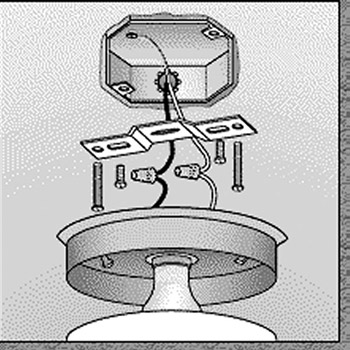
Figure 22-10: The hard-wire installation of a ceiling-mounted light fixture
Outlet PlugsFreestanding lamps and those fixtures designed to be portable are generally not constructed for hard-wiring installation and use a two- or three-prong plug that is inserted in a standard AC receptacle table and floor lamps, some under-counter fluorescent or halogen lights, and portable task lighting are generally outlet plug type fixtures.
Light Socket or Receptacle
Regardless of the type of lighting to be used, each has a built-in receptacle, socket, or a pair of sockets (like in a fluorescent fixture) where the bulb, tube, or light source is installed. Incandescent light fixtures have a threaded socket that the light bulb is screwed into. Fluorescent fixtures have a pair of sockets where a fluorescent tube is installed by placing the pins on the ends of the tube into the slots on the socket and twisting the tube to lock it into place. Halogen and other high-intensity fixtures have a two-contact socket into where the lamp is pushed.
Diffusers and Shades
Nearly all light fixtures include a cover or what is called a diffuser. A diffuser, like the globe on the light fixture shown in Figure 22-11, is an opaque or translucent glass, plastic, acrylic, or perhaps alabaster piece that performs two functions: to shield the light source and to spread or scatter the light in an even pattern in all directions.
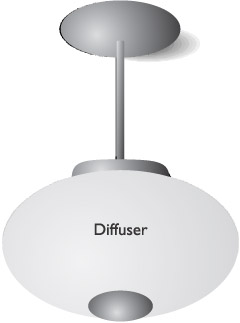
Figure 22-11: The globe on this light fixture diffuses the light produced by the fixture’s light source.
Diffused lighting produces less shadowing than direct lighting because the light doesn’t come from any definite direction. In addition to a diffuser that is a part of a light fixture, a white or light colored wall could also produce diffused light.
A lampshade may seem like it could be a diffuser as well, but the purpose for a lampshade on a table or floor lamp or perhaps a wall or ceiling-mounted fixture is to shade the light source and protect your eyes from a direct view of the light source. In most cases, lampshades are used to direct light either down or up and although some light may be diffused through the cloth, plastic, or glass of the shade, its purpose is not the same as a diffuser.
Lighting Controls
Lighting controls, depending on the type in use, are used to lower a room’s light levels to conserve energy and extend the life of a light source, change the ambient lighting in a room, set the light level of task lighting, and to create a variety of lighting scenes at the touch of one button for each space.
As briefly discussed in Chapter 21, there are a variety of lighting controls that can be used in a home. Lighting controls range from the common toggle on/off switch to new wireless in-room and whole-house controls.
In Room Controls
The most common in-room lighting control is still the two-position on-off switch, but technology no longer limits the choice to this basic light control. A variety of new controls are available that not only control room lighting, but also provide flexibility and in many cases, reduce energy costs. The most common of the in-room lighting controls are
- Dimmers: This type of switch is used to reduce the voltage flowing to a lighting fixture that in turn reduces the light produced by the fixture. Dimmers are usually associated with incandescent lighting, but with a dimming ballast installed, fluorescent lighting can also be controlled using a dimmer. Dimmer switches are available in a variety of control types: rotary (shown in Figure 22-12), slide (shown in Figure 22-13), or touch styles (see Figure 22-14).
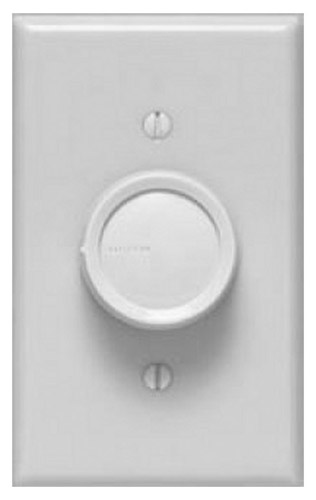
Figure 22-12: A rotary-style dimmer control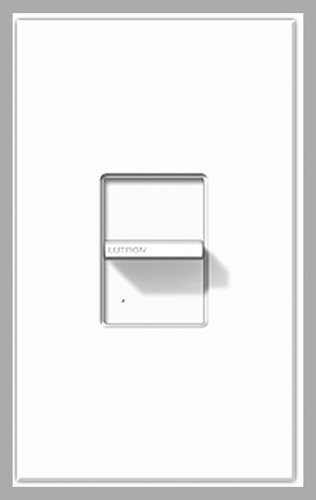
Figure 22-13: A slide switch dimmer control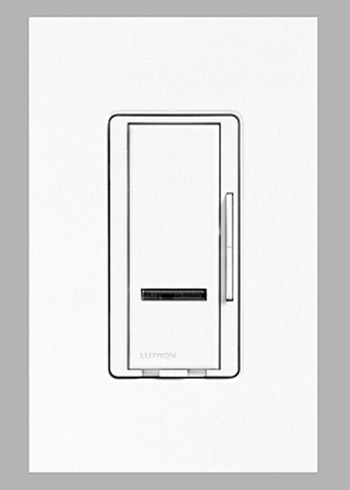
Figure 22-14: A touch switch dimmer control - Motion and occupancy detectorsNot only do motion detector controls provide convenience for a person entering a room, but they also help save energy by turning off lighting in unoccupied rooms. Different types of motion detector controllers (an example is shown in Figure 22-15) are available, including fully automatic and manual on automatic off. Motion and occupancy sensors use two different technologies: passive infrared (PIR) and ultrasonic. PIR sensors detect changes in energy generated by occupants entering or moving about in a space. Ultrasonic sensors send out high-frequency sound waves that bounce off objects in the space. Moving objects in the space change the frequency of the wave, which is interpreted as somebody being in the room and the lights are turned on or stay on for a preset amount of time.
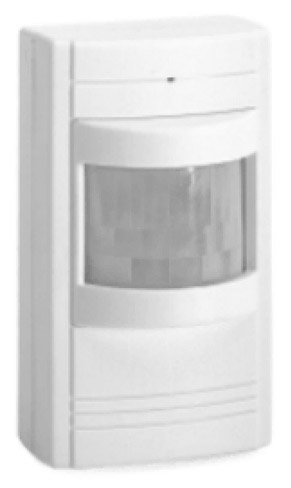
Figure 22-15: A motion detector sensor - PhotocellsPhotocells, also called photoelectric cells and electric eyes, are small devices that can be mounted on a ceiling (see Figure 22-16), wall, along a driveway, or just about anywhere. A photocell senses changes in lighting levels and sends a signal to a central controller that interprets the signal as a need for turning on lighting fixtures in a room or zone. Some photocells also include the signal processing and can be used to directly control a lighting fixture directly wired to it.
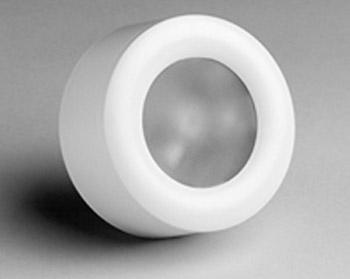
Figure 22-16: A photocell, like this model, can be mounted on a ceiling or wall.
Photo courtesy of Leviton Manufacturing Company, Inc.
- SwitchesThe everyday on-off light switch is convenient and is still preferred by some homeowners for home resale purposes. Beyond the two-position up or down toggle switch, there are variations that replace the toggle with a two-position rocker or a push-button and some that include an indicator light that glows when the lighting is on.
- TimersTimers can be electronic interval timers or some form of a rotary control. Timers are best applied in rooms that are infrequently occupied or with lighting that is used only for short periods, such as the lighting in bathrooms, closets, and pantries.
Automated Lighting Controls
The primary component of a centralized whole-house automated lighting control system is the keypad interfaces placed throughout the home. With keypads the walls are cleaned up since a single-gang keypad can control up to nine different lights or scenes. Keypads, like the one shown in Figure 22-17, allow a room’s lighting to be controlled by the touch of a button to create preferred lighting in a room. Each preset lighting variation or combination in a room or area is called a lighting scene.
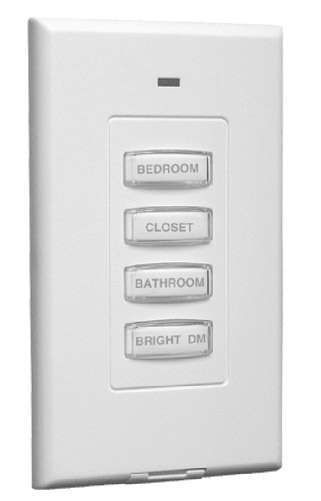
Figure 22-17: Two configurations of a multi-function keypad lighting control
Photo courtesy of Smarthome, Inc.
Lighting control keypads can be in-wall devices (Figure 22-17), handheld devices (Figure 22-18), or tabletop touch-screen units (Figure 22-19).

Figure 22-18: A handheld X-10 lighting system remote control uses RF signals to communicate to a base receiver
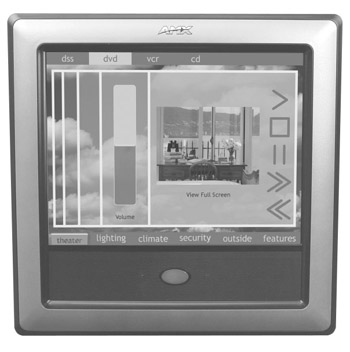
Figure 22-19: A tabletop touch-screen system controller
Photo courtesy of AMX Corporation.
Wireless Lighting Controls
Wireless lighting controls (those that don’t require new wire to be installed) provide the ability to control the lighting of an occupied room, as well as in other rooms, to set or change lighting scenes easily.
The most popular wireless lighting control systems use either radio frequency (RF) signaling or powerline carrier (PLC) technology. RF signals require radio wave transmitters and receivers. PLC actually does work on wires but we list it here under wireless since it requires no special/new wiring. PLC transmits and receives its signals over the AC wiring in a home.
Wireless control systems require the installation of “smart” switches. With RF control, if wall-mounted keypads are to be used, the wiring for keypads must be done during the pre-wire phase of construction or retrofitted.
Powerline Lighting Controls
PLC systems use the AC wiring of a home to communicate signals to a lighting control system. PLC system remote controls use RF technology to communicate to a PLC receiver device, such as a light switch, lamp module, or appliance module. Some PLC systems also offer a portable keypad that can be plugged into any AC outlet and sends signals to control the lights connected to the PLC system. PLC systems can be configured to control dimmers, light switches, and even ceiling fan switches.
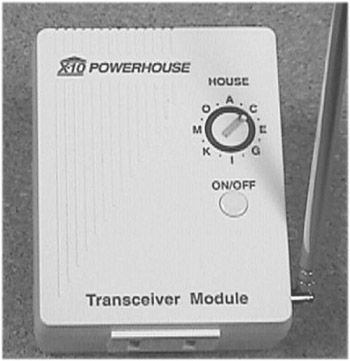
Figure 22-20: A PLC transceiver module
The primary components of a PLC system are
- Light switchesPLC light switches look just like a standard light switch and are wired into the electrical system using a nearly exact procedure. The difference between a PLC light switch and an ordinary light switch is that the wiring is used for signal transmission rather than opening and closing the circuit to the lighting fixture.
- Lamp controlsLamp control modules either plug directly into an AC outlet or can be inserted into the lamp to control a lamp. There are two types of plug-in modules, dimmer and screw-in. Lamp controls are used to reduce or raise the AC power to a lamp, which dims or brightens the lamp. Dimmer modules are controlled using an RF dimmer or keypad.
- Plug-in lamp controls: This type of PLC lamp control is plugged into an AC outlet and the lamp to be controlled is then plugged into an AC outlet on the face of the control module (see Figure 22-21).
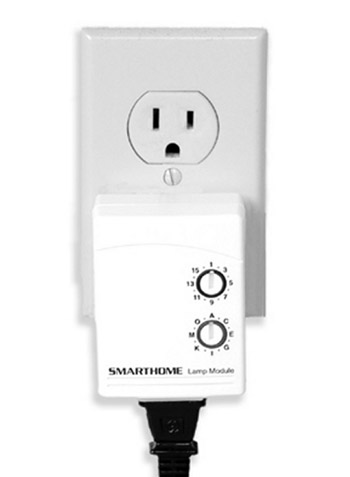
Figure 22-21: A PLC plug-in lamp control module
- Plug-in lamp controls: This type of PLC lamp control is plugged into an AC outlet and the lamp to be controlled is then plugged into an AC outlet on the face of the control module (see Figure 22-21).
Photo courtesy of Smarthome, Inc.
- Screw-in or bayonet lamp controls: This type of PLC lamp control (see Figure 22-22) is either screwed or inserted and twist-locked into the lamp socket of the light fixture. The light bulb or lamp is then screwed or inserted into the control. The control is operated using a remote control to dim and turn off the lamp.
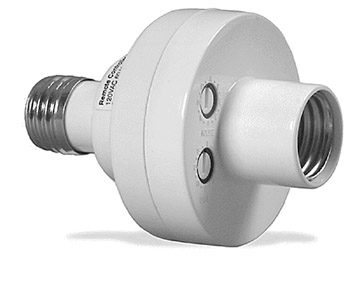
Figure 22-22: A PLC screw-in lamp control module
Photo courtesy of Smarthome, Inc.
- Appliance controlsAppliance control modules plug directly into an AC outlet. They control like a relay and can only turn the device plugged into them on or off. They cannot dim like a lamp module. They come either with a two-prong plug or a three-prong plug with ground.
- Room keypadsPLC room controls commonly have buttons that allow for individual device control and preset lighting scenes. Figure 22-17, earlier in the chapter, shows examples of room keypads.
- Whole house controllersThis type of controller allows for programming of devices by time and situation and allows for setup of scenes. When combined with keypad buttons, it gives remote and scene control throughout the house. It is a larger and smarter version of a PLC room keypad that is capable of controlling the lighting throughout a house from any room.
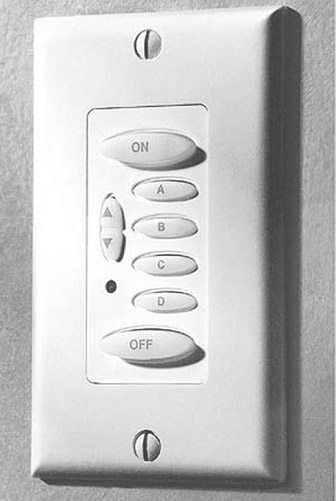
Figure 22-23: A PLC lighting keypad controller
Photo courtesy of Smarthome, Inc.
PLC System MappingIn a PLC lighting control system, a combination of codes is used to address the individual remote controls, transceivers, and modules. The addressing scheme uses a combination of codes, a house code and a unit code, to address as many as 256 devices on a system. An alphabetic letter, such as the letters A to P, commonly represents the house code and the unit code is a number, like the numbers 1 to 16.
The house and unit codes are typically set on a device by turning the house and unit code wheels with a small screwdriver. Only devices with the same house code will communicate with one another, so if you are installing a PLC lighting control system, be sure to set the house and unit codes, which can be assigned sequentially, before installing the devices.
| Note |
The default house code on most systems is “A.” It is recommended that “A” not be used to avoid any possibility of the next-door neighbor turning on or off the lights. |
Wireless RF Controls
In addition to PLC wireless controls, there are also RF lighting control transceivers that interpret the RF signal for transmission over twisted-pair wire and some that transmit directly to an RF receiver connected to the lighting system controller. One such system is the Lutron RadioRA system that includes the following RF devices in its basic package, as illustrated in Figure 22-24:
- Wall-mounted master controlThis control allows for preset lighting scenes or the control of individual lamps. Wall-mounted controls in one room can be used to turn on lighting in other rooms or throughout the house.
- Dimmer controlsDimmers are controlled by a master control module that directs the dimmer to turn on, dim, brighten, or turn off one or more lights in a room or area.
- RF signal repeaterIn large homes, or in systems that wish to have a larger RF range, an RF repeater receives and retransmits the signals of the lighting control system. A signal repeater enables such optional features as car controls (to turn on the lights from within a car pulling into the driveway) or exterior lighting controls.
- Tabletop controlsRemote control devices can be used to activate room or area lighting scenes or to turn on or off lighting throughout a home.
- Entry master controlsAllows the lighting system to be controlled from outside at an entryway into the home.
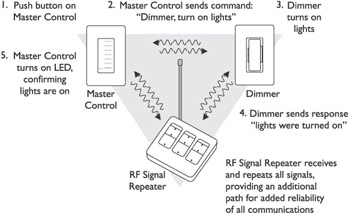
Figure 22-24: The Lutron RadioRA system and how its components interact using wireless RF signals
Wired Lighting Controls
Wired lighting control systems are essentially what they sound like—lighting controls connected to lighting fixtures or controllers by electrical wiring or networking cable.
Standard Lighting Controls
Perhaps the most basic of wired lighting controls is the standard on/off toggle switch or dimmer controls found in virtually every home. The switch or dimmer is wired directly in-line with the lamp or fixture it controls. The most common controls found in standard lighting control systems are
- On/Off switchesThe traditional type of lighting control used in virtually all homes. This control is simply a two-position or toggle switch that either turns on or turns off the electricity flowing to a light fixture.
- Rotary dimmer controlsThe most common type of dimmer control found in homes, this control uses a push-on/push-off switch that can be rotated to change the lighting level of a room.
- Slider dimmer controlsA variation on the rotary dimmer, these controls have a slider switch that allows the lighting level of a room to be set manually.
- Timer controlsThese controls incorporate a clock or timer to complete or break the electrical circuit to any light fixtures attached to the device. These controls can be either separate or built-in devices.
- Touch dimmer controlsUsing either a one-button control or a keypad, the lighting level in a room can be changed.
Automated Lighting Controls
A more advanced approach to wired lighting control systems are those that connect room controllers and modules using low-voltage cabling, such as coaxial or twisted-pair cable. Basically, this type of system consists of room control stations that are connected over structured wiring to a central lighting system controller that receives and transmits signals to carry out the commands requested by the control stations to and from the controllers connected to light fixtures. The central controller device in a digital lighting control system is either a proprietary microprocessor-based controller or a networked PC running specialized lighting control software.
Automated lighting controls can either be centralized or distributed. What is meant by centralized is that all the lighting loads controlled are wired to a central control panel for control. In a distributed system, the control switch or device is located locally in the area of the lighting being controlled, such as the wall switch. In some spaces, such as a home theater, having the master control unit local simplifies the cabling.
| CROSS-REFERENCE |
Chapters 23 and 24 also cover lighting system topics, including information on lighting system design and installation. |
Review
Lighting fixtures are known by a variety of names, including lamps, chandeliers, pendants, tracks, luminaires, and others, with each designed for a specific use and purpose. A light fixture is an electrical device that produces visible light. Light fixtures are also referred to as luminaires.
Built-in lighting systems are referred to as architectural luminaires, which are constructed features that enclose a lighting fixture. Architectural luminaires are most commonly attached to a wall or ceiling with a shielding board or structural feature used to hide the fixture. Common examples of architectural luminaires are coves, soffits, and valances. The lighting effect of a luminaire can be controlled through the use of baffles, louvers, and diffusers.
Recessed lighting fixtures are primarily installed in ceilings. Two types of recessed lights are available: round recessed downlights and square or rectangle recessed downlights. Round downlights can be incandescent, halogen, or compact fluorescent. Square downlights are usually linear fluorescent or halogen lamps.
Ceiling fixtures can be classified as chandelier, flush-mounted, close to ceiling, pendant, and spotlight. Linear or circline fluorescent fixtures, incandescent fixtures, pendant fixtures, and track lighting provide for ambient and task lighting. Linear fluorescent fixtures provide light for laundry rooms, bathrooms, garages, and kitchens. Incandescent fixtures are used for general lighting. Pendant and track lighting fixtures are used to provide task lighting. Wall-mounted fixtures include wall sconces, vanity lighting, track lighting, and spotlights.
Daylighting is a lighting design technique that uses artificial light and natural daylight to maintain a certain level of lighting in a room or zone. Daylighting requires the use of photocell and timer controls. Window coverings and UV filters can be used to control the amount of sunlight that enters a room.
Lighting installed on the exterior of a home serves a variety of purposes, including: leisure, landscaping, security, and safety. The exterior lighting fixture types used for these types of lighting are: large area lighting; entry lighting, landscape lighting, walkway lighting, and leisure area lighting.
Lighting controls are used to lower a room’s light levels to conserve energy and extend the life of a light source, change the ambient lighting in a room, set the light level of task lighting, and to create a variety of lighting scenes. A variety of lighting controls are used to control room lighting: dimmers, motion and occupancy detectors, photocells, switches, and timers.
The primary components of a centralized whole-house automated lighting control system are keypad interfaces placed throughout the home. Keypads allow a room’s lighting to be controlled by the touch of a button. Lighting control keypads can be in-wall devices, handheld, or tabletop units.
Wireless lighting controls provide the ability to control the lighting of an occupied room, as well as in other rooms, to set or change lighting scenes easily. Wireless lighting control systems use RF or PLC technology. PLC systems use AC wiring to communicate signals to a lighting control system. PLC systems can be configured to control dimmers, light switches, and even ceiling fan switches. The primary components of a PLC system are: lamp controls, room keypads, and whole house controllers.
RF lighting control transceivers interpret signals and transmit them over twisted-pair wire or directly to an RF receiver at the lighting system controller.
The most common controls found in standard lighting control systems are: on/off switches, dimmer controls, and timer controls.
An advanced approach to lighting control systems connects room controllers and modules over low-voltage cabling. The central controller device is a proprietary microprocessor-based controller or a networked PC running specialized lighting control software. Automated lighting controls can either be centralized or distributed.
Questions
- What is the lighting system technique that uses artificial light to augment natural light levels in a room or area called?
- Downlighting
- Daylighting
- Skylighting
- Sunlighting
- In order to block sunlight from a room with windows, which of the following lighting control features could be used as a part of an automated lighting control system?
- Motorized draperies or shades
- Block-out window inserts
- Photo-sensitive glass
- UV filters
- Which of the following is not a purpose for exterior lighting?
- Landscaping
- Growth lighting for exterior plants
- Safety
- Security
- Which of the following is not a type of dimming control?
- On/Off
- Rotary
- Slide
- Touch
- What technology is commonly used to detect when someone enters a room?
- Photocell
- PIR
- RF
- Time clock
- PLC systems are applications of which communications technology?
- RS-232
- RS-422
- HomePNA
- X-10
- What are the two types of PLC lamp controls?
- Automatic
- Bayonet
- Dimmer
- Relay
- Up to how many devices can a PLC system address using a combination of home codes and unit codes?
- 8
- 64
- 128
- 256
- What type of cable are wired lighting control system keypads typically installed on?
- High-voltage wiring
- Low-voltage wiring
- HVAC wiring
- Telephone wiring
- A lighting control system where the devices in a room are controlled by devices located in that room is said to be
- Centralized
- Decentralized
- Distributed
- Isolated
Answers
- B. Downlighting is a type of lighting installation where the lamps are ceiling mounted or luminaires; skylighting is a window treatment; and sunlighting is neither.
- A and D. Block-out window inserts and photo-sensitive glass are not part of an automated lighting control system—one requires manual installation and the other is a chemical reaction to sunlight.
- B. Okay, so it was a bit obvious, but I wanted you to remember the purposes for exterior lighting and cause you to reflect on how exterior lighting can be included in a lighting control system.
- A. Rotary, slide, and touch controls are all types of dimming controls. An on/off switch can only turn a lamp on or off.
- B. Passive infrared technology (PIR) is the most commonly used technology in motion and occupancy detectors. Ultrasonic sensors in another technology that is used in this type of device.
- D. X-10 is a communications technology that transmits signals over AC power lines. CEBus is another AC powerline technology, though most systems available are based on the X-10 technology. RS-232 and 422 are types of serial data communications and HomePNA is used primarily for data networking.
- C and D. In order for a PLC system to be automatic, some type of sensor must be used. Bayonet is one of the types of screw-in dimming controls, but the general types of PLC lamp controls are dimmers and relays.
- D. Given that each home code typically can address up to 16 unit codes, only 16 home codes are required to address up to 256 devices from a central lighting controller.
- B. LV wiring, meaning the type of cabling used in a structured wiring system—coaxial and UTP—are typically used for wiring automated centralized lighting control systems.
- B. A centralized system is controlled through a single system controller in which local controllers are distributed and a decentralized system controls the lighting from within a room or zone. I guess it could be isolated, but that’s not a lighting control system term.
Part I - Home Technology Installation Basics
- Wire and Cable Basics
- Connector Types and Uses
- Wiring Installation Practices
- Codes, Standards, and Safety Practices
Part II - Structured Wiring
- Infrastructure Wiring Basics
- Planning a Structured Wiring Installation
- Rough-In Installation
- Trim-Out Installation
- Troubleshooting Structured Wiring
Part III - Home Computer Networks
- Computer Network Basics
- Computer Network Hardware
- Computer Network Software
- Designing and Installing a Computer Network
- Troubleshooting a Home Network
Part IV - Audio/Video Systems
- Distributed Audio System Basics
- Designing and Installing Distributed Audio Systems
- Distributed Video Basics
- Designing and Installing Distributed Video Systems
- Troubleshooting Audio Systems
- Troubleshooting Video Systems
Part V. Home Lighting Management Systems
- Home Lighting Basics
- Home Lighting Devices
- Designing a Home Lighting Control System
- Installing a Home Lighting Control System
- Troubleshooting and Maintaining Lighting Control Systems
Part VI - Telecommunications
- Home Communication System Basics
- Designing and Installing a Home Telephone System
- Troubleshooting a Home Communication System
Part VII - HVAC and Water Management
Part VIII - Security System Basics
- Security System Basics
- Designing a Home Security System
- Installing a Home Security System
- Troubleshooting and Maintaining a Home Security System
- Home Security Surveillance Systems
- Home Access Control Systems
Part IX - Home Technology Integration
- Defining Users Needs and Desires
- User Interfaces
- Home Automation Controllers
- Programming
- Integrating the Connected Home
- Other Home Technology Integration Devices
Part X - Appendices
EAN: N/A
Pages: 300
